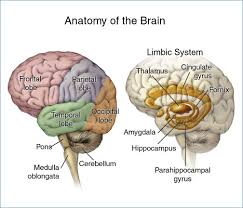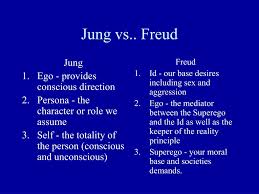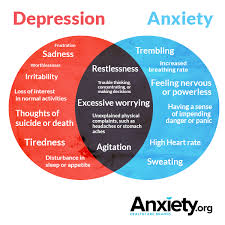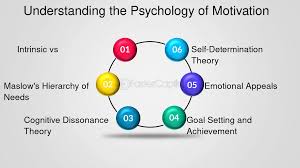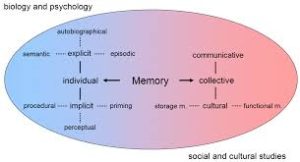The human brain, with its intricate networks and remarkable complexity, is one of the most fascinating and critical organs in the body. It governs every function of the human body, from basic survival instincts to higher cognitive processes like thinking, reasoning, and decision-making. Understanding the brain and how it influences human behavior is not only a fascinating academic pursuit but also essential for fields ranging from psychology to neurology, education, and even artificial intelligence. This article explores the structure and functions of the human brain, the interplay between its various parts, and how they shape human behavior.
The Structure of the Human Brain
The human brain weighs about 1.4 kilograms and is made up of approximately 86 billion neurons (nerve cells). These neurons communicate through electrical impulses and synapses, enabling rapid information transfer within the brain. The brain’s structure can be divided into three primary parts: the hindbrain, midbrain, and forebrain.
- Hindbrain: This is the oldest part of the brain in terms of evolutionary development. It includes structures such as the medulla oblongata, pons, and cerebellum. These areas control basic life-sustaining functions like heart rate, respiration, and movement coordination. The cerebellum is particularly involved in balance and motor control.
- Midbrain: The midbrain plays a critical role in processing visual and auditory information. It is involved in regulating movements, especially those related to visual stimuli. It also helps in controlling aspects of attention and arousal.
- Forebrain: The largest and most complex part of the brain, the forebrain is responsible for higher cognitive functions such as thinking, reasoning, and emotion. It includes the cerebrum, which is divided into two hemispheres (left and right), and structures such as the thalamus, hypothalamus, limbic system, and cortex.
- Cerebrum: The cerebrum is the largest part of the brain and is divided into four lobes: the frontal, parietal, temporal, and occipital lobes. Each of these lobes plays a different role in processing various types of information.
- The frontal lobe is involved in decision-making, problem-solving, and higher-level functions such as planning and self-control.
- The parietal lobe processes sensory information and is key in spatial awareness and movement.
- The temporal lobe is responsible for processing auditory information and is important for memory and speech.
- The occipital lobe primarily processes visual information.
- Limbic System: This part of the brain is often referred to as the “emotional brain” because it plays a major role in regulating emotions and memory. The amygdala (responsible for processing emotions such as fear and pleasure) and the hippocampus (critical for memory formation and retrieval) are key structures within the limbic system.
- Cerebrum: The cerebrum is the largest part of the brain and is divided into four lobes: the frontal, parietal, temporal, and occipital lobes. Each of these lobes plays a different role in processing various types of information.
Neurons and Neurotransmitters: The Brain’s Communication System
The brain communicates through complex networks of neurons. Neurons are the brain’s fundamental units, transmitting electrical signals to one another through synapses. These signals are transmitted by neurotransmitters, which are chemical messengers that allow neurons to communicate. Neurotransmitters play a crucial role in shaping both physical and psychological functions.
- Dopamine: Often referred to as the “feel-good” neurotransmitter, dopamine is associated with pleasure, motivation, and reward. It plays a significant role in behaviors related to addiction, goal-directed activities, and learning.
- Serotonin: This neurotransmitter is involved in regulating mood, sleep, and appetite. It has a direct impact on emotional regulation and is often linked to feelings of happiness and well-being.
- Acetylcholine: Acetylcholine is important for memory and learning. It also plays a role in muscle movement, and deficiencies in acetylcholine can result in memory problems or disorders like Alzheimer’s disease.
- GABA (Gamma-Aminobutyric Acid): GABA is the brain’s main inhibitory neurotransmitter, helping to reduce neuronal excitability. It plays a role in calming the brain and preventing overactivity, which can lead to conditions like anxiety.
Brain Plasticity and Learning
One of the most remarkable aspects of the brain is its ability to adapt and change over time. This phenomenon, known as neuroplasticity, refers to the brain’s ability to reorganize itself by forming new neural connections throughout life. Neuroplasticity is crucial for learning, memory, and recovery from brain injuries.
When we learn something new, whether it’s a skill, language, or fact, the brain forms new pathways or strengthens existing ones. Similarly, neuroplasticity allows the brain to compensate for damage to certain areas. For example, if one part of the brain is injured, other parts may take over its function, a process often seen in stroke recovery.
The Brain and Behavior: How Structure Influences Action
Understanding how the brain influences behavior is one of the key questions in neuroscience and psychology. Human behavior is not only influenced by genetic factors and external stimuli but also by the brain’s activity and structure. Here are some key aspects of the relationship between the brain and behavior:
- Emotions and Behavior: The limbic system, especially the amygdala, plays a crucial role in emotional responses. It helps the brain assess potential threats (leading to the “fight-or-flight” response) and is also involved in processing positive emotions such as happiness. Behavioral responses to emotions are often a result of interactions between the amygdala and other areas like the prefrontal cortex, which regulates emotions through reasoning and decision-making.
- Decision-Making: The prefrontal cortex, located in the frontal lobe, is crucial for higher cognitive functions like planning, decision-making, and impulse control. Damage to this area can impair an individual’s ability to make reasoned decisions or control impulsive behavior. Behavioral disorders such as ADHD or substance abuse are sometimes linked to dysfunction in the prefrontal cortex.
- Memory and Behavior: Memory, especially long-term memory, is primarily managed by the hippocampus. Memories are essential for learning and shaping behavior based on past experiences. For instance, a positive experience may lead to the repetition of certain behaviors, while negative memories can deter certain actions. Additionally, the process of memory consolidation (where short-term memories are transferred into long-term storage) is influenced by both genetic factors and environmental experiences.
- Motivation and Reward: Motivation is another key factor that shapes behavior. The brain’s reward system, primarily involving dopamine and the mesolimbic pathway, motivates us to engage in behaviors that lead to pleasurable outcomes. This system explains why behaviors such as eating, socializing, and achieving goals are reinforced. The release of dopamine after such behaviors reinforces the desire to repeat them.
- Social Behavior: The brain also plays a role in social behaviors such as empathy, cooperation, and conflict. The medial prefrontal cortex is involved in processing social cues, understanding others’ perspectives, and navigating social norms. People with damage to this area may struggle with social interactions and empathy, often seen in conditions like autism spectrum disorder (ASD).
Disorders of the Brain and Their Impact on Behavior
When the brain’s structure or function is altered due to injury, illness, or genetic factors, it can lead to a wide range of neurological and psychological disorders. These disorders can significantly affect behavior and cognition. Some common examples include:
- Alzheimer’s Disease: This neurodegenerative condition primarily affects memory and cognitive function. It is associated with the buildup of amyloid plaques in the brain, particularly in the hippocampus, impairing memory and leading to erratic behavior.
- Parkinson’s Disease: Caused by the degeneration of dopamine-producing neurons in the brain, Parkinson’s disease leads to tremors, rigidity, and difficulty in motor control. It also affects mood, leading to depression and changes in behavior.
- Schizophrenia: This psychiatric disorder is associated with changes in brain structure and neurotransmitter imbalances, particularly in dopamine. Symptoms include delusions, hallucinations, and cognitive impairments, significantly impacting an individual’s behavior and ability to function in society.
- Depression and Anxiety Disorders: Both depression and anxiety are linked to imbalances in neurotransmitters like serotonin and norepinephrine. These disorders can drastically change an individual’s behavior, including withdrawing from social interactions, changes in sleep and eating patterns, and impaired decision-making.
Conclusion
Understanding the human brain and its relationship to behavior is essential for numerous fields, including psychology, medicine, education, and even artificial intelligence. The brain’s complexity and adaptability offer endless possibilities for research and understanding. From basic survival functions to the development of complex thoughts and behaviors, the brain is central to what it means to be human. Through continued research, scientists are uncovering more about the intricate ways in which the brain shapes our thoughts, emotions, and actions, offering hope for better treatments for neurological and psychiatric disorders.
